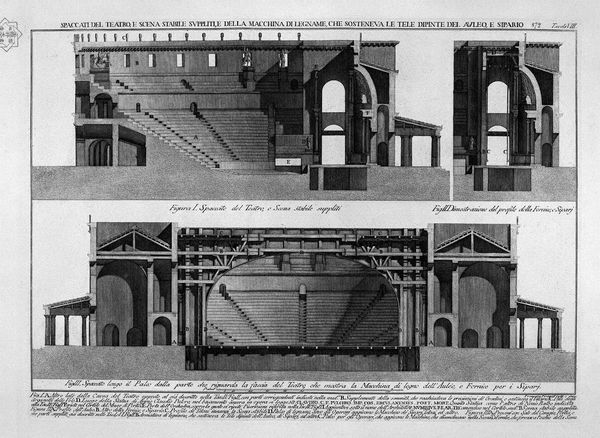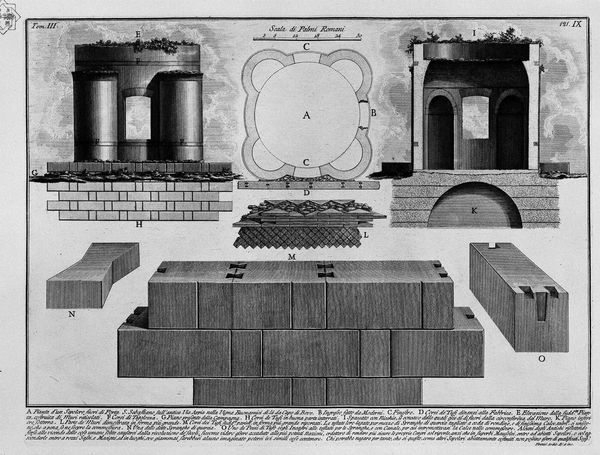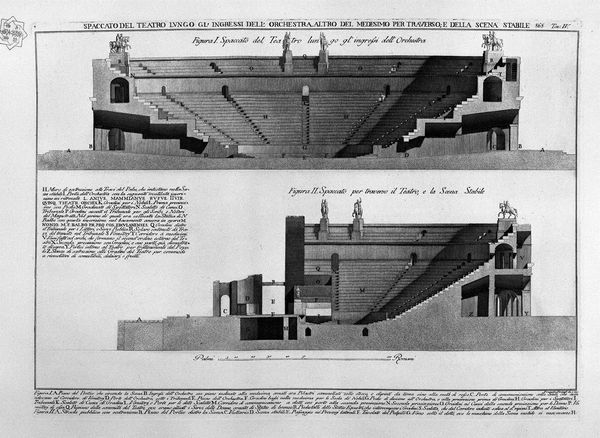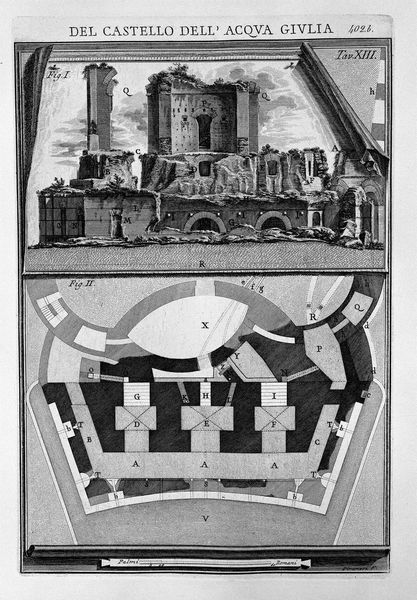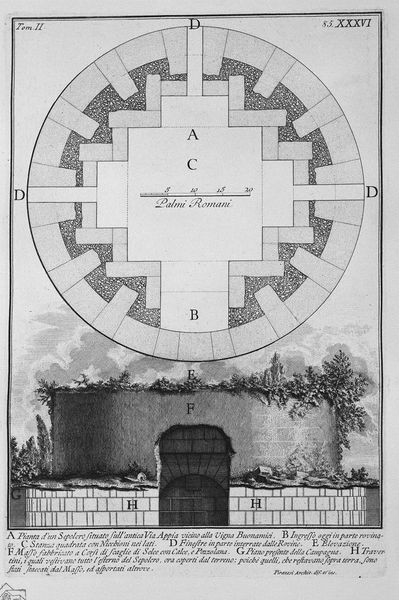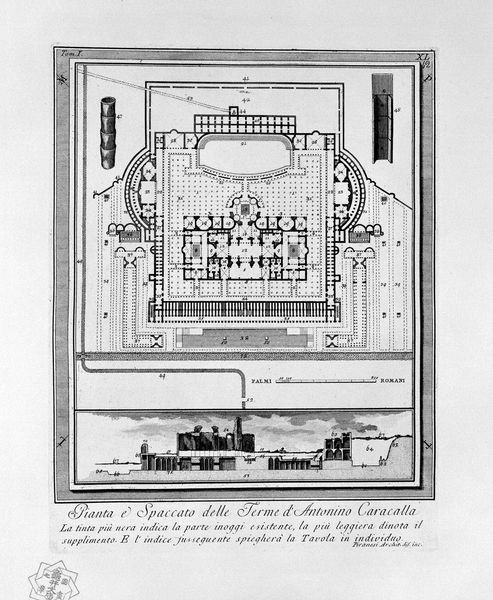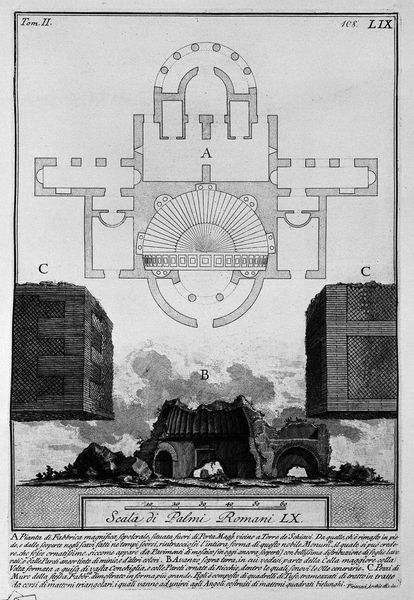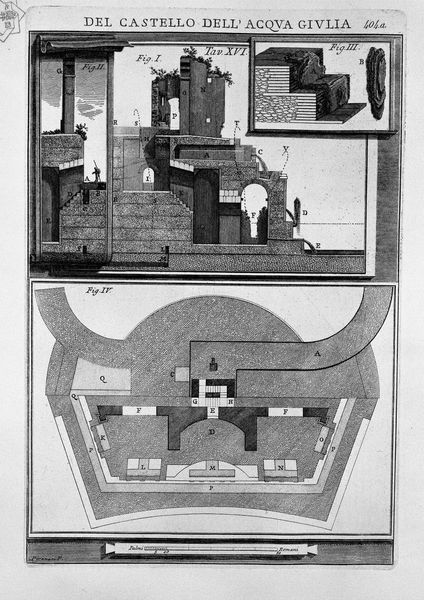
The Roman antiquities, t. 3, Plate XIII. Plan of the Tomb of Plautius Family Via Tiburtina near Ponte Lugano.
0:00
0:00
drawing, print, etching, engraving, architecture
#
drawing
# print
#
etching
#
perspective
#
romanesque
#
geometric
#
ancient-mediterranean
#
architectural section drawing
#
architectural drawing
#
cityscape
#
history-painting
#
academic-art
#
engraving
#
architecture
Copyright: Public domain
Giovanni Battista Piranesi created this etching of the Tomb of the Plautius Family near Ponte Lugano as part of his series on Roman antiquities. His work reflects the 18th-century obsession with the classical past. Piranesi wasn’t just interested in accurate documentation, he was also trying to evoke a sense of awe and wonder. Through dramatic perspectives and detailed renderings, he captured the grandeur of Roman architecture, even in its ruined state. This aesthetic approach aligns with the broader cultural movement of the Picturesque, which valued the beauty of decay and the sublime power of nature reclaiming human creations. Considered as a whole, Piranesi’s series helped shape the visual imagination of the Roman Empire, feeding into contemporary debates about architecture, design, and the legacy of classical civilization. Art historians consult these prints to better understand the cultural values that influenced their production and reception. By studying the way artists like Piranesi represented the past, we gain insight into the social and intellectual currents of their own time.
Comments
No comments
Be the first to comment and join the conversation on the ultimate creative platform.


